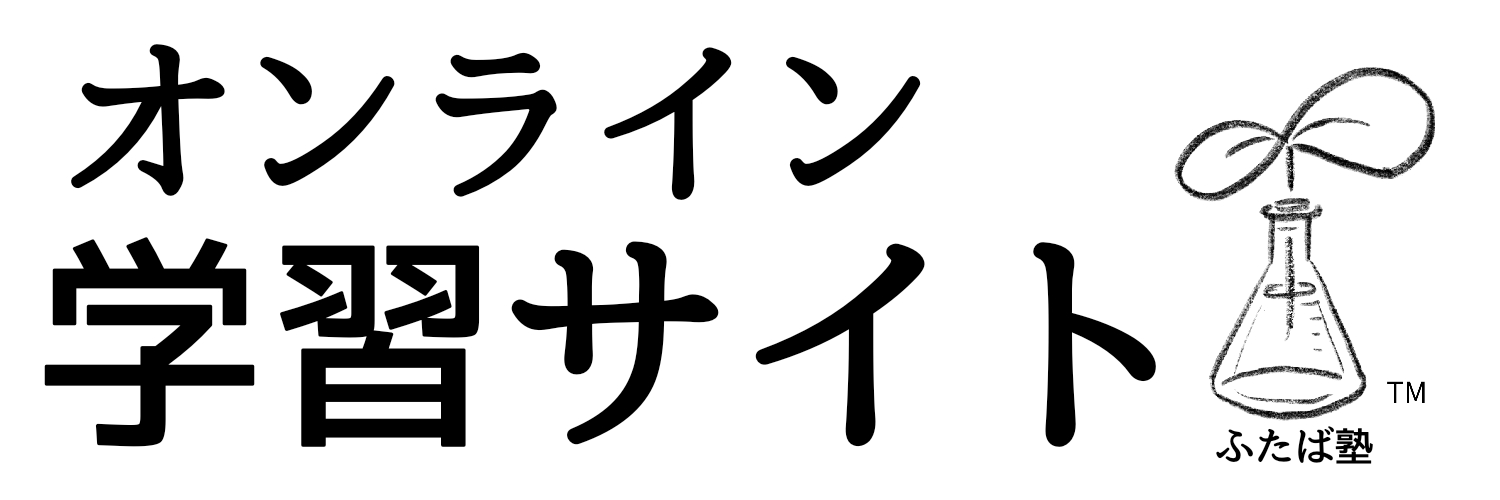
英語の文字と音
アルファベット
ABCDEFG HIJKLMN OPQRST UVWXYZ
abcdefg hijklmn opqrst uvwxyz

- apple リンゴ🍎
- book 本📕
- cat ネコ🐈
- dog イヌ🐶
- elephant ゾウ🐘

- fish 魚🐟
- gorilla ゴリラ🦍
- hat 帽子👒
- ice 氷🧊
- Japan 日本🗾

- king 王👑
- lion ライオン🦁
- mouth 口👄
- nuts ナッツ🥜
- octopus タコ🐙

- panda パンダ🐼
- queen 王妃🔱
- rabbit ウサギ🐰
- shark サメ🦈
- tiger トラ🐅

- umbrella 傘☔
- violin ヴァイオリン🎻
- watch 時計⌚
- box 箱🎁
- yellow 黄色🍌

- zebra シマウマ🦓
Lesson1 肯定文・疑問文・否定文(am, are, do, not )
be動詞の肯定文
be動詞=〜です。
| 主語 | I(私は) | You(あなたは) | We(私たちは) | You(あなたたちは) | they(彼ら(彼女ら)は) |
| be動詞 | am | are | are | are | are |
I am Japanese.(私は日本人です。)
I am from China.(私は中国出身です。)
You are teacher.(あなたは先生です。)
We are baseball players.(私たちは野球選手です。)
You are students.(あなたたちは生徒です。)
短縮形(I am=I'm、You are=You're、We are=We're)
| 元の形 | I am | You are | We are |
| 短縮形 | I'm | You're | We're |
I am fine.⇒I'm fine(私は調子がいいです。)
You are tired.⇒You're tired.(あなたは疲れています。)
We are in the library.⇒We're in the library.(私たちは図書館にいます。)
一般動詞の肯定文
動詞=動きを表す言葉
例:play(する)、have(持つ)、like(好き)、study(勉強する)、eat(食べる)、drink(飲む)、make (つくる)、run(走る)、watch(見る)、think(考える)※like 、watch、thinkのような心の動きも含まれる。
I play tennis.(私はテニスをします。)
You have a computer.(あなたはコンピュータを持っている。)
You like video games.(あなたはテレビゲームが好きです。)
They speak English.(彼らは英語を話します。)
be動詞の疑問文
肯定文:You are Tomoko.(あなたはともこです。)
↓主語と動詞の順番を入れ替えると疑問文になる。
疑問文:Are you Tomoko?(あなたはともこですか?)
答え方:Yes, I am.(はい、そうです。)No, I am not.(いいえ、違います。)
一般動詞の疑問文
肯定文:You go to school.(あなたは学校に行きます。)
↓主語の前にDoをつけると疑問文になる。
疑問文:Do you go to school?(あなたは学校に行きますか。)
答え方:Yes, I do.(はい、行きます。)No, I do not.(いいえ、行きません。)
肯定文:They play baseball.(彼らは野球をします。)
疑問文:Do they play baseball?(彼らは野球をしますか?)
答え方:Yes, they do.(はい、します。)No, they do not.(いいえ、しません。)
肯定文:You like strawberries.(あなたはいちごが好きです。)
疑問文:Do you like strawberries?(あなたはいちごが好きですか。)
答え方:Yes, I do.(はい、好きです。)No, I do not.(いいえ、好きではありません。)
be動詞の否定文
肯定文:I am Japanese.(私は日本人です。)
↓be動詞の後ろにnotをつけると否定文になる。
否定文:I am not Japanese.(私は日本人ではありません。)
肯定文:You are Ken.(あなたはケンです。)
否定文:You are not Ken.(あなたはケンではありません。)
肯定文:We are students.(私たちは生徒です。)
否定文:We are not students.(私たちは生徒ではありません。)
短縮形(are not =are'nt)
We are not in the park.(私たちは公園にいません。)
=We are'nt in the park.
You are not tired.(あなた(たち)は疲れていません。)
=You are'nt tired.
am notは短縮形にできない
I am not hungry.(私はお腹がすいてません。)
☓ I am'nt hungry.←am notは短縮形にできない。
一般動詞の否定文
肯定文:I like natto.(私は納豆が好きです。)
↓一般動詞の前にdo notをつけると否定文になる
否定文:I do not like natto.(私は納豆が好きではありません。)
肯定文:You play the guitar.(あなたはギターを弾きます。)
疑問文:You do not play the guitar.(あなたはギターを弾きません。)
短縮形(do not=don't)
We do not write Japanese.(私たちは日本語を書きません。)
=We don't write Japanese.
【何が好きか聞くとき(what)】
↓Whatの後に疑問文を繋げる
What food do you like?(どんな食べ物が好きですか。)
what is your name?(あなたの名前は何ですか。)
Lesson2 ~することができます(can)【助動詞】
can〜=〜することができる
※動詞を補助する言葉を助動詞という。例:can(〜することができる)will(〜するでしょう)must(〜しなければならない)
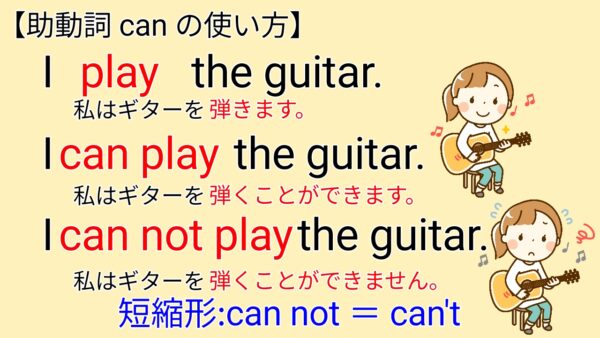
I play the guitar.(私はギターを弾きます。)
↓動詞の原形の前にcanをつけると「〜することができる。」という文になる
I can play the guitar.(私はギターを弾くことができます。)
↓canの後ろにnotをつけると否定文になる
I can not play the guitar.(私はギターを弾くことができません。)
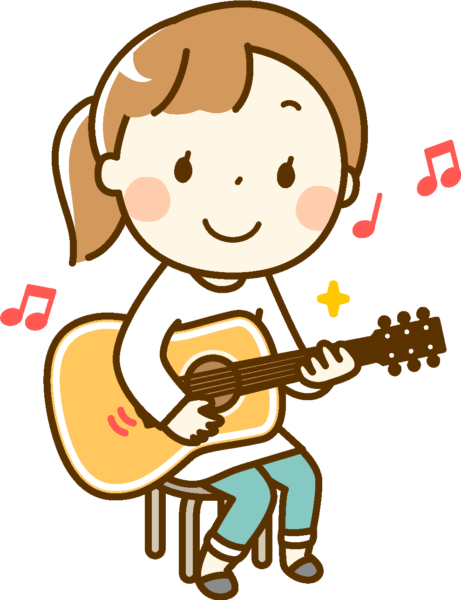
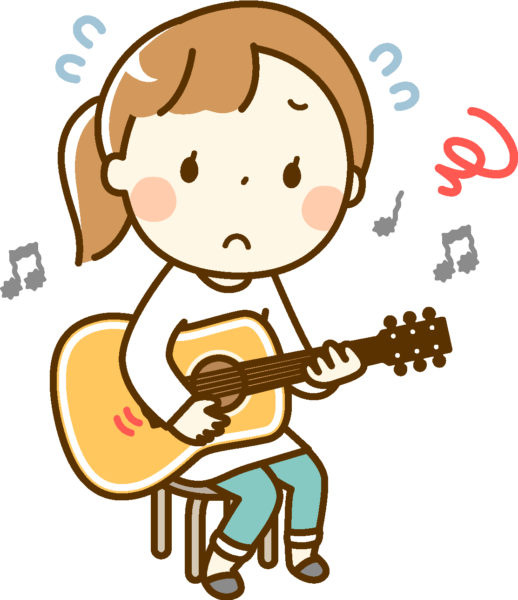
【can + 動詞】【can not + 動詞】
短縮形(can not =can't)
I can not play the guitar.(私はギターを弾くことができません。)
=I can't play the guitar.
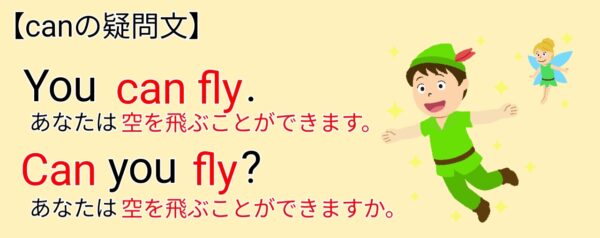
↓canと主語を入れ替えると疑問文になる
疑問形:Can you play the guitar?(あなたはギターを弾くことができますか。)
答え方:Yes, I can.(はい、できます。)No, I can not.(いいえ、できません。)=No, I can't.
【数を聞くとき(How many~?)】
↓How many +名詞の複数形 の後に疑問文を繋げる
How many books do you have?(何冊本を持っていますか。)
How many butterflies do you see?(何匹チョウが見えますか。)
Lesson3 こちら(これ)は~です。(this)何(What)誰(Who)【指示代名詞、疑問詞】
| 主語 | これ | あれは | それ | これら | あれら | それら(彼ら、彼女ら) |
| 英語 | This | That | It | These | Those | They |
| be動詞 | is | is | is | are | are | are |
「this(これ)」
肯定文:This is Tom.(こちらはトムです。)
肯定文:This is an apple.(これはりんごです。)
否定文:This is not an apple.(これはりんごではありません。)
「that(あれ)」
肯定文:That is a flower.(あれは花です。)
否定文:That is not a flower.(あれは花ではありません。)
「these(これら)、those(あれら)、they(それら)」
肯定文:These are my toys.(これらは私のおもちゃです。)
否定文:These are not my toys.(これらは私のおもちゃではありません。)
肯定文:Those are my mother's bags.(あれらは私の母のかばんです。)
否定文:Those are not my mother's bags.(あれらは私の母のかばんではありません。)
肯定文:They are her games.(それらは彼女のゲームです。)
否定文:They are not her games.(それらは彼女のゲームではありません。)
「主語が名詞の場合」
肯定文:Japanese is easy.(日本語は簡単です。)
否定文:Japanese is not easy.(日本語は簡単ではありません。)
疑問文
↓主語とbe動詞を入れ替えると疑問文になる
疑問文:Is this an apple?(これはりんごですか。)
疑問文:Is that a flower?(あれは花ですか。)
答え方:Yes, it is.(はい、そうです。)No, it is not.(いいえ、違います。)※答えるときはitを使うことができる
疑問文:Are these your toys?(これらはあなたのおもちゃですか。)
疑問文:Are those his mother's bags?(あれらは彼の母のかばんですか。)
答え方:Yes, they are.(はいそうです。)No, they are not.(いいえ、違います。)※答えるときはtheyを使うことができる
人称代名詞
| 〜は/が | 〜の | 〜を/に | 〜のもの | |
| わたし | I | my | me | mine |
| あなた | you | your | you | yours |
| 彼 | he | his | him | his |
| 彼女 | she | her | her | hers |
| それ | it | its | it | its |
| わたしたち | We | our | us | ours |
| あなたたち | you | your | you | yours |
| 彼ら/彼女ら/それら | they | their | them | theirs |
| トム(人名) | tom | tom's | tom | tom's |
【何(what)、誰(Who)を聞くときの文】
↓What(Who)の後に疑問文を繋げる
What is this?(これは何ですか。)
=What's this?
What do you eat?(あなたは何を食べてますか?)
Who are you?(あなたは誰ですか。)
短縮形
What is = what's
Lesson4 三人称単数現在のS(s,es)
三人称単数現在の肯定文
| 呼び方 | 一人称 | 二人称 | 三人称 |
| 単数 | I | you | he,she,it,Tom |
| 複数 | we | you | these,those,they |
↓主語が三人称単数現在(私でもあなたでもなく単数で現在を表すとき)、動詞の後に「s」をつける。
Miki speaks English.(ミキは英語を話します。)
He runs all day.(彼は一日中走っている。)
三単現のSの例外
① -ch、-sh、-s、-o、-xで終わる動詞→esをつける
teach→teaches(教える)、wash→washes(洗う)、miss→misses(〜がいなくてさびしい)、go→goes(行く)、fix→fixes(修理する、固定する)
《覚え方》チャーシューソックス(chshsox)はesをつける
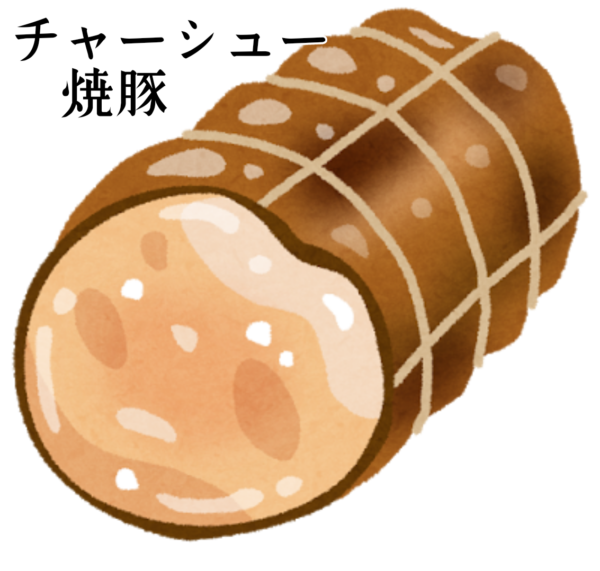 +
+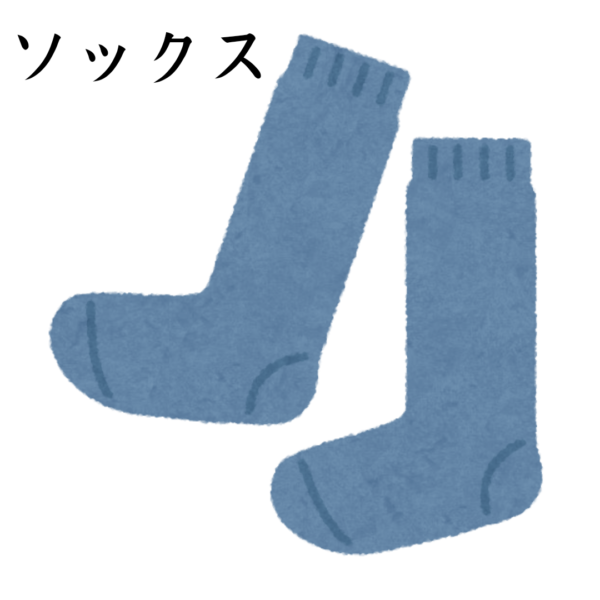 =
=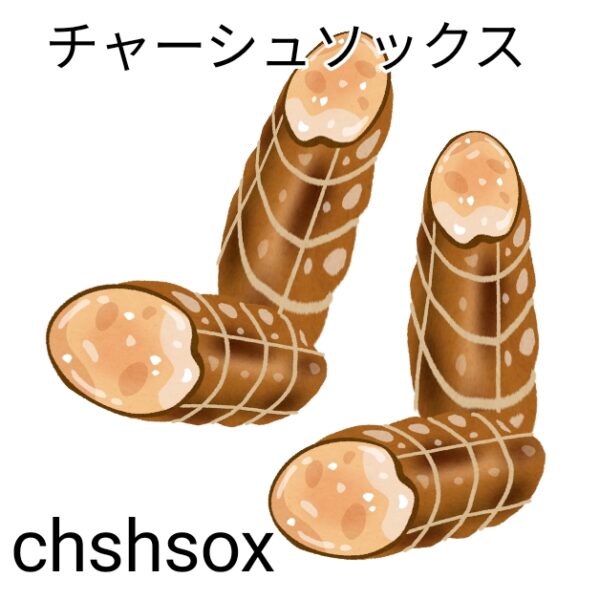
② 子音字+yで終わる動詞→語尾のyをiに変えて、esをつける
study→studies(勉強する)、try→tries(挑戦する)
※play→plays(母音+yなのでそのままsをつける)
③ have は has になる
have→has(持つ(所有している))
Miyuki has a cat at home.(みゆきは家で猫を飼っている。)
三人称単数現在の疑問文
肯定文:Jane plays the piano.(ジェーンはピアノを弾きます。)
↓三単現の主語の前にdoesをつけて、動詞を原形に戻す
疑問文:Does Jane play the piano?(ジェーンはピアノを弾きますか。)
答え方:Yes, she does.(はい、弾きます。)No, she does not.(いいえ、弾きません。)
否定文:Jane does not play the piano.(ジェーンはピアノを弾きません。)
=Jane does'nt play the piano.
【選択肢のある問い(which〜?)】
↓Which 〜の後に疑問文を繋げる
Which subject do you like?(どの教科が好きですか。)
Which one do you want?(どちらがほしいですか。)
Lesson5 ~しているところです(…is ~ing)[現在進行形]
↓be動詞の後に動詞のing形をおく
肯定文:Tom is studying mathematics now.(トムは今、数学を勉強しているところです。)
↓be動詞の後にnotをおく
否定文:Tom is not studying mathematics now.(トムは今、数学を勉強しているところではありません。)
↓主語とbe動詞を入れ替える
疑問文:Is Tom studying mathematics now?(トムは今、数学を勉強しているところですか。)
答え方:Yes, he is.(はい、そうです。)No, he is not.(いいえ、違います。)
肯定文:They are playing soccer.(彼らはサッカーをしているところです。)
否定文:They are not playing soccer.(彼らはサッカーをしているところではありません。)
疑問文:Are they playing soccer?(彼らはサッカーをしているところですか。)
答え方:Yes, they are.(はい、そうです。)No, they are not.(いいえ、違います。)
What are you doing?(あなたは何をしているところですか。)
ingの付け方の例外
① eで終わる動詞 → eを抜いてingをつける
make→making(つくる)、take→taking(洗う)
②小さい「ッ」の発音が入る動詞→子音を重ねる
get→ getting(もらう)、sit→sitting(座る)、stop→stopping(止まる)
③ swimとrun→語尾を重ねてingをつける
run→running(走る)、swim→swimming(泳ぐ)
※yで終わる動詞はそのままingをつけてOK!
play→playing(する)、study→studying(勉強する)、enjoy→enjoying(楽しむ)
【誰のものですか?(Whose〜?)】
↓Whose〜の後に疑問文をつける
Whose key is this?(これは誰のカギですか?)
It's Tom's.(それはトムのものです。)
Lesson6 ~した(~ed)、【一般動詞の過去形】
Emi enjoy at school.(エミは学校を楽しんでいる。)
↓動詞を過去形(語尾にed)にすると過去の文になる
Emi enjoyed at school.(エミは学校を楽しんだ。)
He walked in the park.(彼は公園を歩いた。)
They played volleyball yesterday.(彼女らは昨日、バレーボールをした。)
過去形の例外
①動詞の語尾がeの場合→dをつける
like→liked、use→used
②子音+yで終わる動詞→yをiに変えてedをつける
study→studied、carry→carried、
③小さい「ッ」の発音が入る(短母音+子音で終わる)動詞→子音を重ねる
stop→stopped、drop→dropped
④不規則動詞(規則性がなく覚えるしかない動詞)
不規則動詞一覧表
| 意味 | 原形 | 過去形 | 過去分詞 |
| 持つ | have | had | had |
| 行く | go | went | gone |
| 来る | come | came | come |
| 得る | get | got | got |
| 失う | lose | lost | lost |
| 与える | give | gave | given |
| 去る、離れる | leave | left | left |
| 知る | know | knew | known |
| 見る | see | saw | seen |
| 言う | say | said | said |
| 話す | speak | spoke | spoken |
| 作る | make | made | made |
| 食べる | eat | ate | eaten |
| 書く | write | wrote | written |
| 買う | buy | bought | bought |
| 売る | sell | sold | sold |
| 考える | think | thought | thought |
| 見つける | find | found | found |
| する | do | did | done |
He went to the station.(彼は駅へ行った。)
They thought about that probrem.(彼らはあの問題について考えた。)
肯定文:Emi enjoyed at school.(エミは学校を楽しんだ。)
↓主語の前にDidをつけて、動詞を原形に戻す
疑問文:Did Emi enjoy at school?(エミは学校を楽しみましたか。)
↓動詞の前にdid notを置いて、動詞を原形に戻す
否定文:Emi did not enjoy at school.(エミは学校を楽しめなかった。)
=Emi did'nt enjoy at school.
助動詞を含む文の過去形
We can not play baseball.(私たちは野球をすることができない。)
↓助動詞を過去形にする
We could not play baseball.(私たちは野球をすることができなかった。)
canの過去形→could
その他の不規則動詞
| 意味 | 原形 | 過去形 | 過去分詞 |
| 始める | begin | began | begun |
| 走る | run | ran | ran |
| 読む | read | read | read |
| なる | become | became | become |
| 持ってくる | bring | brought | brought |
| 捕まえる | catch | caught | caught |
| 感じる | feel | felt | felt |
| 見つける | find | found | found |
| 忘れる | forget | forgot | forgotten |
| 保つ | keep | kept | kept |
| 会う | meet | met | met |
| 座る | sit | sat | sat |
| 壊す | break | broke | broken |
| 置く | put | put | put |
| 建てる | build | built | built |
| 聞く | hear | heard | heard |
不規則動詞の暗記動画
Lesson7 ~でした(was, were)【be動詞の過去形】
| 意味 | 原形 | 過去形 | 過去分詞 |
| です | am | was | been |
| です | are | were | been |
| です | is | was | been |
be動詞の過去形
My father is a soccer fan.(私の父はサッカーのファンです。)
↓be動詞を過去形(was,were)にすることで過去の文になる
My father was a soccer fan then.(私の父はその頃サッカーのファンでした。)
My parents were basketball player then.(私の両親はその頃バスケット選手でした。)
過去進行形
I am watching TV now.(私は今、テレビを見ているところです。)
↓現在進行系のbe動詞を過去形にすることで過去進行形(〜しているところでした。)の文になる
I was watching TV then.(私はその時、テレビを見ているところでした。)
【~のようですね(look~)】
You look happy.(あなたは幸せに見える=幸せそうですね)
He look like body builder.(彼はボディービルダーのように見える。)
Lesson8 ~になるだろう、~になるでしょう(will, be going to~)【未来の話(be動詞)】
※天気などについては主語にitを使う
It is cold today.(今日は寒いです。)
↓動詞の原形の前にwillをつけると「〜だろう。〜でしょう。〜するつもりです。」という未来の文になる
It will be cold tomorrow.(明日は寒くなるでしょう。)
↓willと主語を入れ替えると疑問文になる
Will it be cold tomorrow?(明日は寒くなるでしょうか。)
↓willの後ろにnotをつけると否定文になる
It will not be cold tomorrow.(明日は寒くならないでしょう。)
【be going to = will】
I will clean the park tomorrow.(私は明日、公園を掃除するつもりです。)
↓willはbe going to に置き換えられる
I am going to clean the park tomorrow.(私は明日、公園を掃除するつもりです。)
Are you going to clean the park tomorrow?(あなたは明日、公園を掃除するつもりですか。)
【してくれませんか?(Can you〜?)】
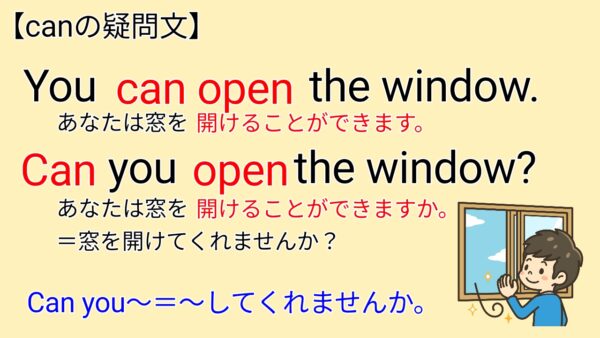
Can you make my bed?(ベッドを整えてくれませんか。)
※本サイトでは音声読み上げソフトとして音読さんを使用しています。©ondoku3.com
